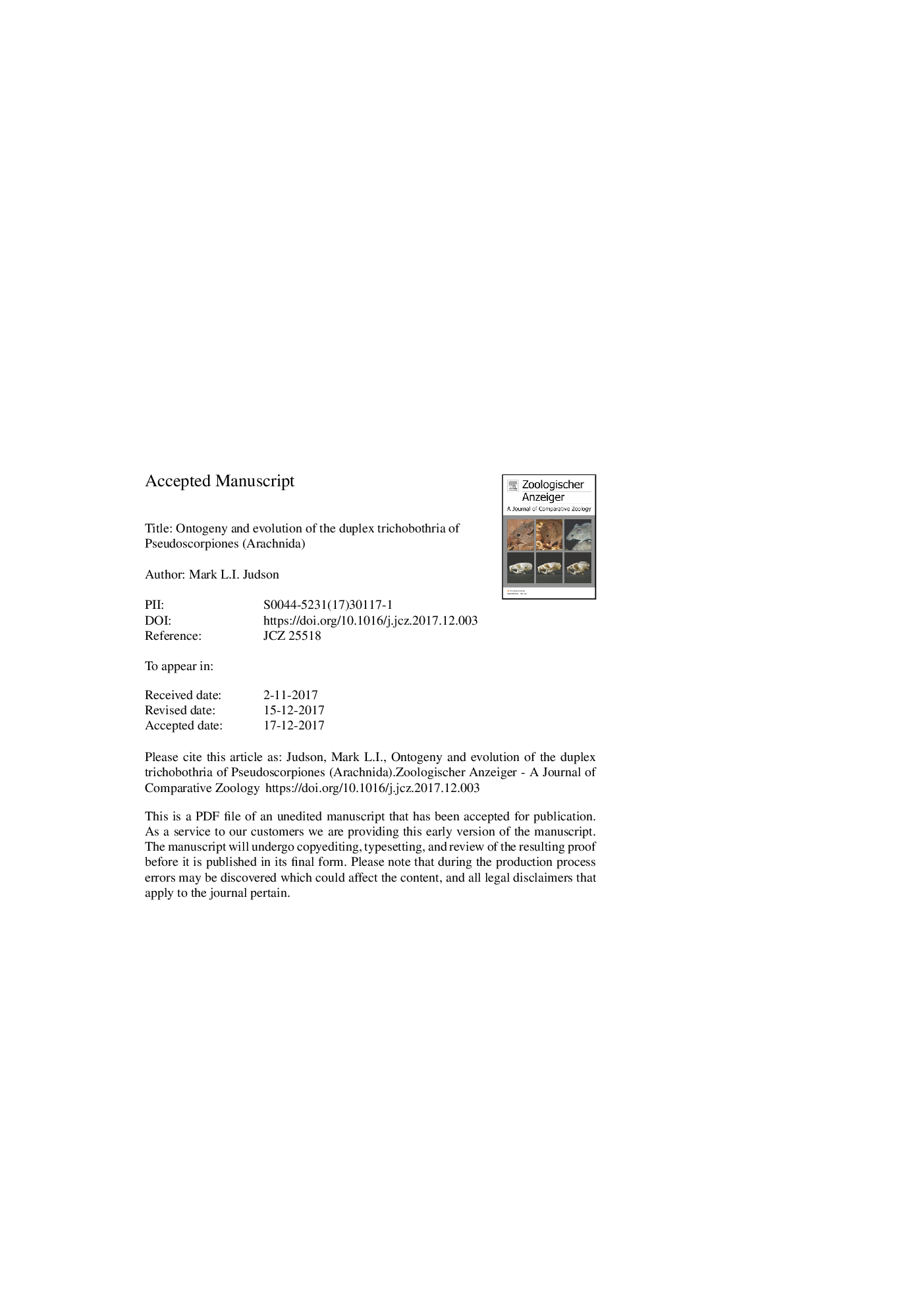| Article ID | Journal | Published Year | Pages | File Type |
|---|---|---|---|---|
| 8626793 | Zoologischer Anzeiger - A Journal of Comparative Zoology | 2018 | 74 Pages |
Abstract
Duplex trichobothria (dx) are paired trichobothria situated near the tip of the fixed finger of the chela in pseudoscorpions of the Devonian plesion Dracochelidae and the extant superfamilies Chthonioidea and Feaelloidea. The paired condition, which is unique within Arthropoda, is here interpreted as the result of a coupling of two previously separate trichobothria: x1 (protonymphal) and x2 (deutonymphal). Trichobothrium et of Chthonioidea and Feaelloidea, which has previously been confused with x1 in the protonymph, does not appear until the deutonymph. In all other extant pseudoscorpions (Iocheirata), the duplex trichobothria are lacking and et appears in the protonymph. These differences allow the definition of two fundamental trichobothriotaxies: Type C (dx present, et deutonymphal) and Type D (dx absent, et protonymphal). The homologies of the trichobothria are determined by the application of Grandjean's priority rule, which implies an orderly sequence in the addition or loss of organs within a homeotypic set, based on the postulate of trichobothrial equivalence, which states that each trichobothrium of Type D has its homologue in a trichobothrium of Type C. It is argued that trichobothriotaxy D has been derived from C through the loss of dx and an ontogenetic advance in the appearance of et, from the deutonymph to the protonymph. Thus, the absence of the duplex in Iocheirata is considered to be the result of a secondary loss. Because dx appears early in ontogeny, this loss would appear to violate the priority rule, but it is suggested that the modifications of the duplex trichobothria may have altered their nature sufficiently to make them vulnerable to suppression-a mechanism here termed metanomic release. Discrepancies between the positions of the duplex trichobothria and neighbouring organs in the protonymph and deutonymph are explained in terms of phaneric interference, whereby the appearance of a new phanere causes displacement of existing organs. Based on their morphology, the coupled trichobothria are suggested to be highly directional sensors that probably play a role during the final phase of prey capture.
Related Topics
Life Sciences
Agricultural and Biological Sciences
Animal Science and Zoology
Authors
Mark L.I. Judson,
